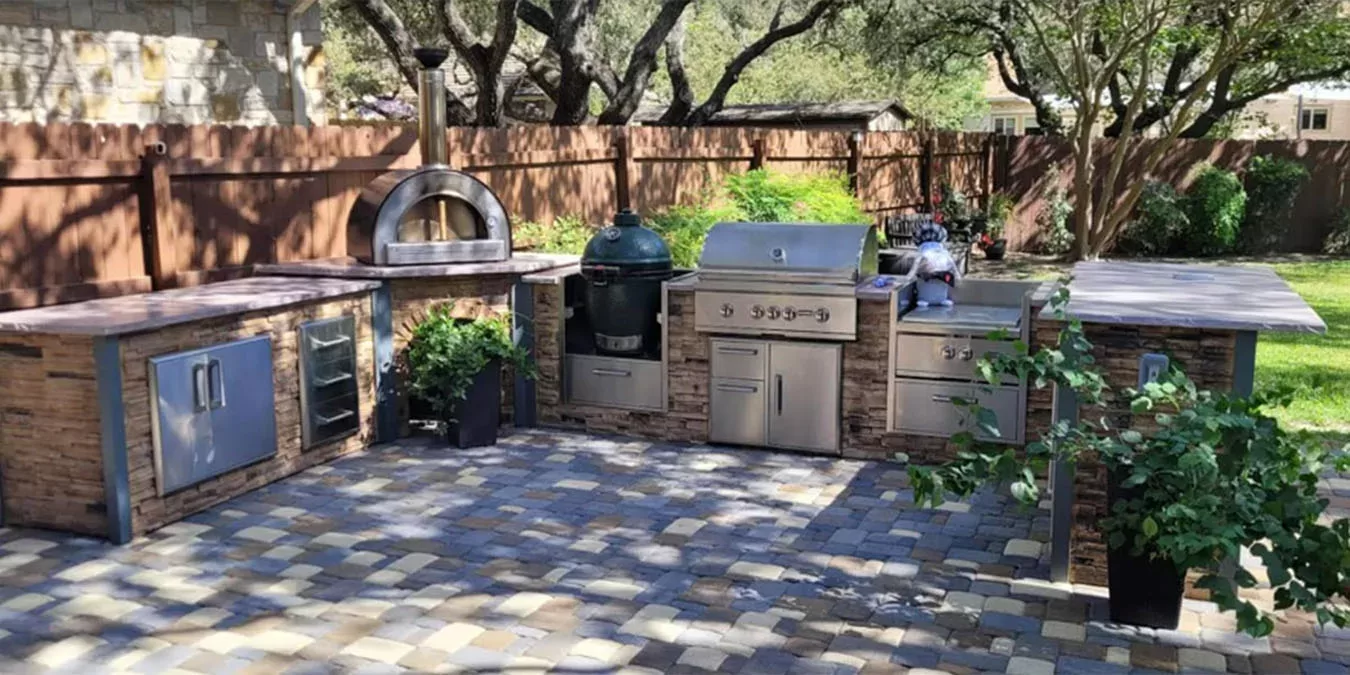Design
The first step in designing your outdoor kitchen is to decide what features you want and how much space you have to work with. Consider the following factors:
- Appliances: What appliances do you want in your outdoor kitchen? Essentials include a grill, but you may also want to include a smoker, a griddle, a sink, a refrigerator, an ice maker, a dishwasher, and or a pizza oven.
- Storage: You’ll need storage space for your cooking utensils, dishes, and food. Consider cabinets, drawers, and shelves.
- Counter space: You’ll need enough counter space to prepare food and cook. Consider a kitchen island or peninsula for additional workspace.
- Seating: You’ll want to have enough seating for your family and guests. Consider a dining table, bar stools, or lounge chairs.
- Other features: Other features you may want to consider include a pergola or awning for shade, a fire pit, or a sound system.
Once you have a good idea of what you want in your outdoor kitchen, you can start to create a layout. Consider the traffic flow and how you will use the space. You may want to sketch out a few different layouts to see what works best for you.
Building
Once you have a design, you can start building your outdoor kitchen. If you’re handy, you can do it yourself. Otherwise, you may want to hire a contractor.
Here are some basic steps for building an outdoor kitchen:
- Prepare the site. Clear the area where you want to build your kitchen and level the ground. You may need to pour a concrete slab to create a foundation.
- Build the frame. Use 2×4 lumber or steal studs to build a frame for your kitchen. Make sure the frame is sturdy and level.
- Add the sheathing. Sheathe the frame with plywood or other durable material.
- Install the appliances and cabinets. Install your appliances and cabinets according to the manufacturer’s instructions.
- Add the countertops. Install your countertops and backsplash.
- Add the finishing touches. Add lighting, flooring, and other finishing touches to complete your outdoor kitchen.
Tips
- Use weather-resistant and fire proof materials for your outdoor kitchen. This will help protect it from the elements.
- Make sure your outdoor kitchen is properly wired and plumbed.
- Consider adding a roof or awning to your outdoor kitchen to protect it from the rain and sun.
- Add landscaping around your outdoor kitchen to create a more inviting space.
Conclusion
Building an outdoor kitchen can be a great way to extend your living space and enjoy the outdoors more. By following these tips, you can design and build an outdoor kitchen that is both functional and stylish.

